Decor You Can Play: Islandopoly and Classic Handcrafted Games by Maztermind
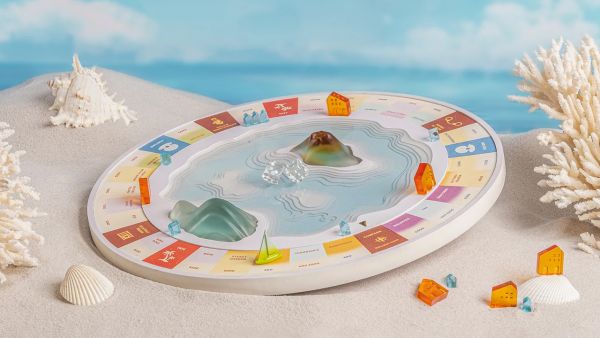
When we first created our game room, we were on the lookout for great decor with a gaming theme. We wondered: what items will draw the attention and curiosity of our guests? What will inspire a spirit of fun and play? Anyone who may be asking these same questions should take a look at Maztermind.
Maztermind is a Vietnamese company that produces classic games and game accessories with an emphasis on meticulous craftsmanship and pleasing aesthetics. The games that they produce are focused on luxury — nothing like the bargain bin games you might find at a big-box retailer.
I had not heard of Maztermind until they reached out and offered some samples for review. I liked what I saw on their website and eagerly anticipated the arrival of their products — which included premium chess, a leather dice cup set, and their latest product: Islandopoly (check it out on Indiegogo).
First, I popped open the magnetic cardboard case for the chess game and admired the artificial leather checkerboard with a copper frame surrounding it. The board is attached to the top lid of a walnut wood box, which holds all of the components safely inside. The pieces themselves are sturdy and weighted, crafted with resin-concrete and pure copper.
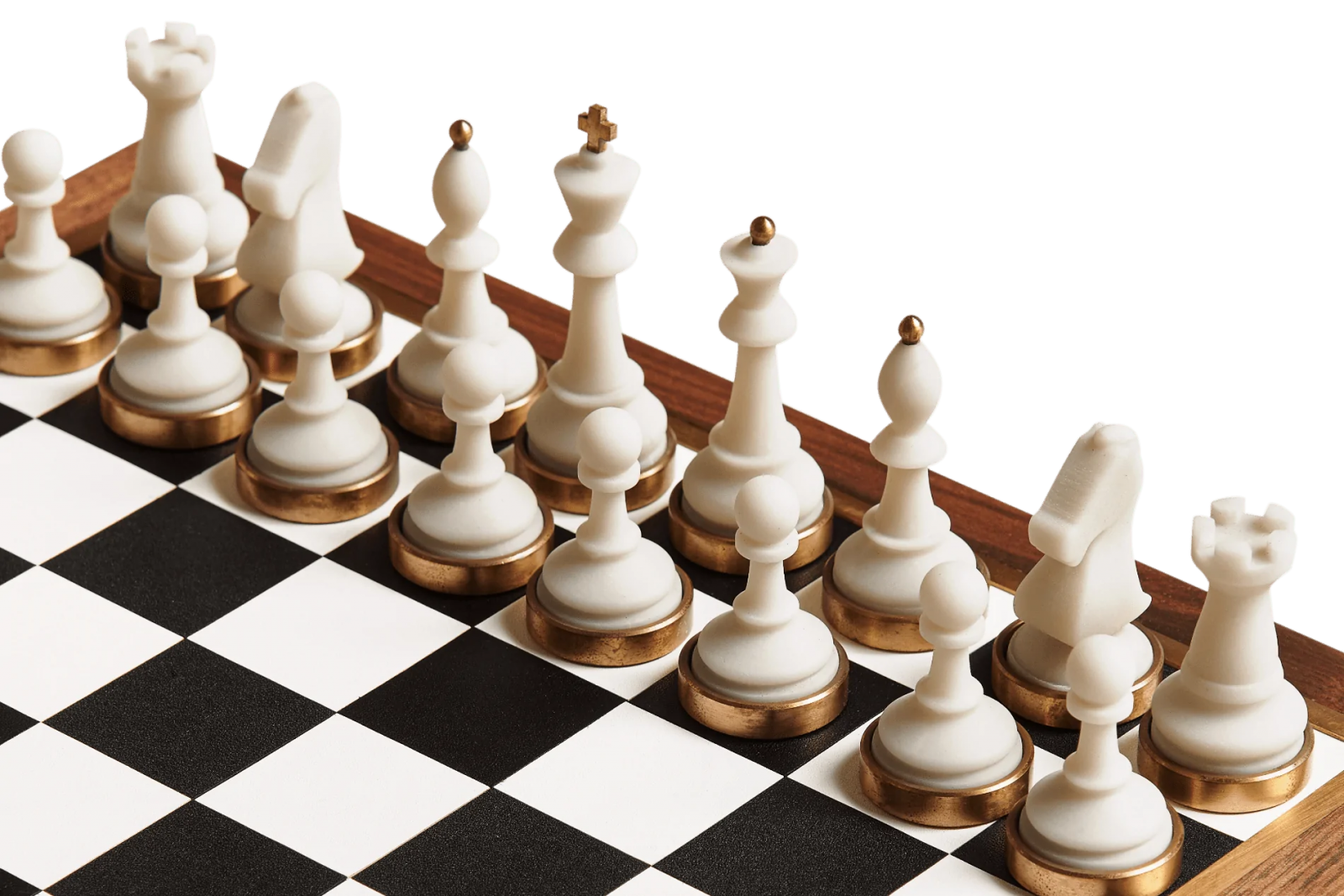
Premium classic chess (photo provided by Maztermind)
Next, I unwrapped the dice cup set. The leather dice cup is beautifully stitched and comes with a lid that snugly fits on top. The resin and leather dice come in a wooden box and are chunky and beautiful. When we later played a game using this set, we noticed that it produces significantly less noise when shaking the dice than a typical Yahtzee-style plastic dice cup. My wife normally refuses to play with dice cups due to the piercing sound of the dice shaking, but in this case, the sound was not a problem.
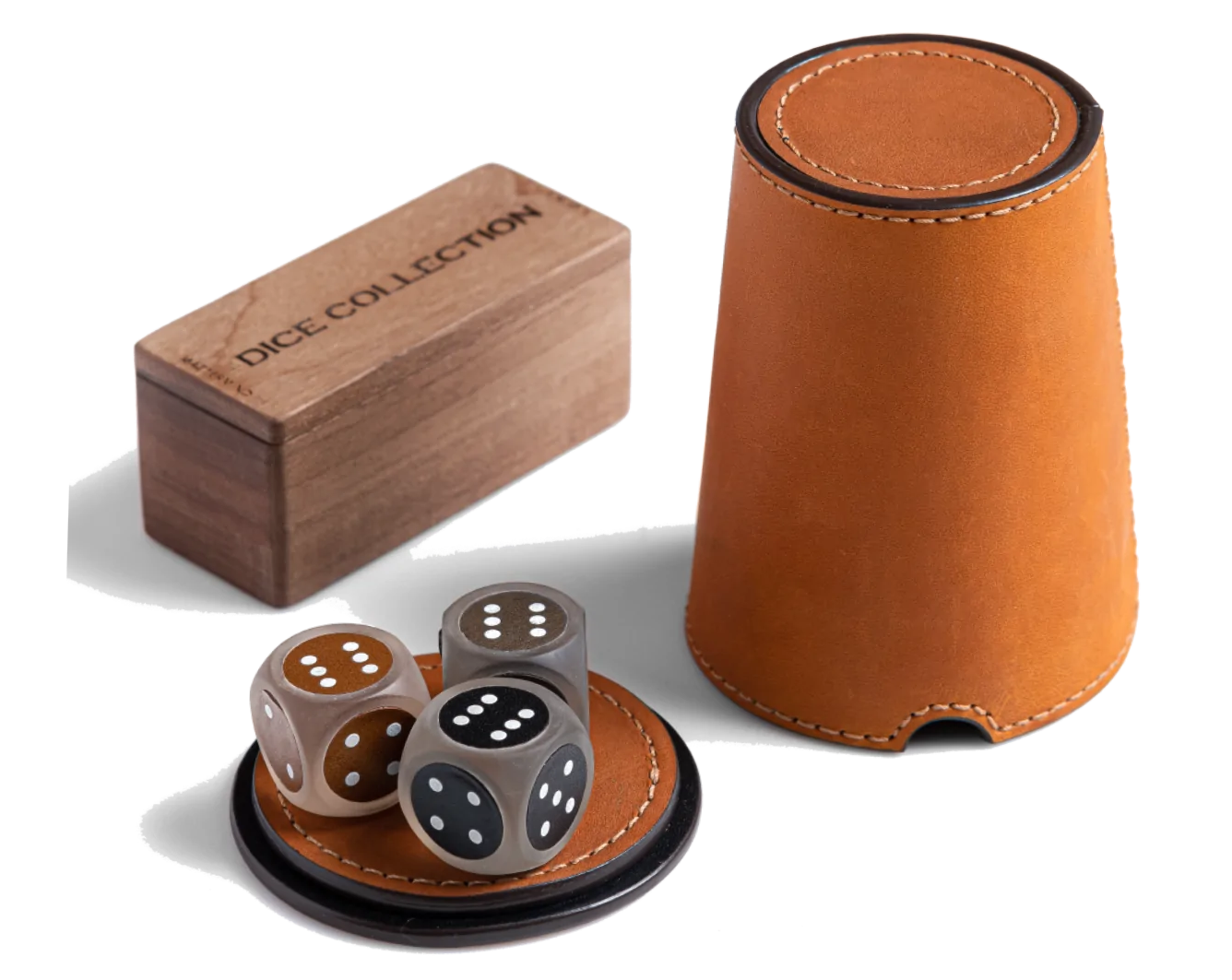
Leather Dice Shaker Cup Set (photo provided by Maztermind)
Finally, I opened up the main attraction and real reason for this article, Islandopoly — Maztermind’s newest product and the focus of their current Indiegogo campaign. As I opened up the display box (which is more like a briefcase than a traditional game box) I literally whistled in awe. The game board is one-of-a-kind, with its translucent blue resin center. The contours of the ocean floor, along with the 3D mountain pieces, make you feel like you’re sailing in the Caribbean. The board itself is made of PVC with artificial leather game spaces. The hostels and resorts are beautiful, translucent colors, and the cards are made of waterproof plastic. The boat pieces are plastic, each painted in a two-shade gradient.
Aesthetics aside, it was time to put this game to the test by playing it with my wife and two daughters (8 and 11 years old).
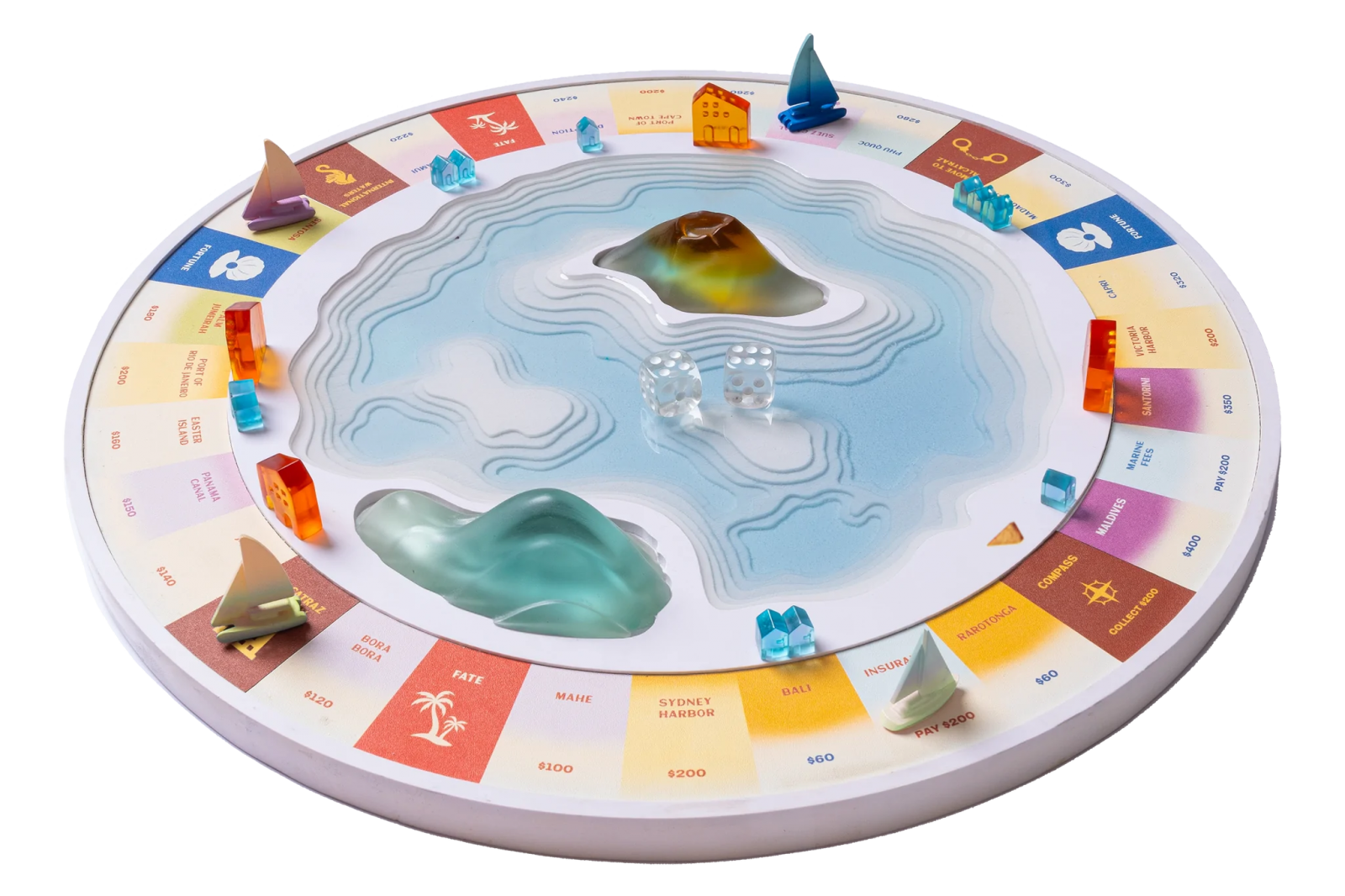
Islandopoly board (photo provided by Maztermind)
Islandopoly Gameplay
Islandopoly , as the title suggests, is a re-theme of the classic game Monopoly, with only a few minor differences. In Islandopoly, players start with $700 each and place their boat pieces on the compass space. Each player takes turns rolling two dice and moving clockwise around the circular board. If doubles are rolled, the player immediately takes another turn, and again if doubles are rolled again — however, if doubles are rolled for the third time in a row, the player must go directly to Alcatraz.
Landing on an island, harbor, port, or canal that has not yet been claimed allows a player to purchase it for the displayed price. If the player does not wish to purchase it (or is unable to), the island is auctioned to any player, with a starting bid of $10. If no one wants it, it remains unclaimed. If you land on a property that is owned by another player, you must pay them the required rental fee. There are also marine assurance and marine fees spaces that require paying $200 to the bank.
When landing on a fate or fortune space, the player must draw the top card from the corresponding deck and carry out the action. Some actions are beneficial, while others can be downright brutal (such as paying $200 to the bank for every island owned). There is a lot of variability here, just like in the original game.
Each time a player lands on or passes the compass space, they collect $200 from the bank. However, if they land on “Move to Alcatraz,” they must go directly to Alcatraz without collecting $200. In Alcatraz, the player may still collect fees, upgrade properties, etc.
To upgrade an island with hostels and resorts, a player must first acquire all of the islands in the same set (and none of them can be mortgaged). On any player’s turn, they may pay money to the bank equal to the upgrade fee for that property to add a hostel. After three hostels have been built, the next upgrade is a resort. Upgrades increase the rental fee for each property.
If you are ever faced with a fee that is higher than the cash you have on hand, you can try to raise the money owed by selling properties and/or mortgaging your own properties. However, if you still can’t raise enough money from the assets you own, you must declare bankruptcy and you are eliminated from the game. The last person remaining in the game is declared the winner.
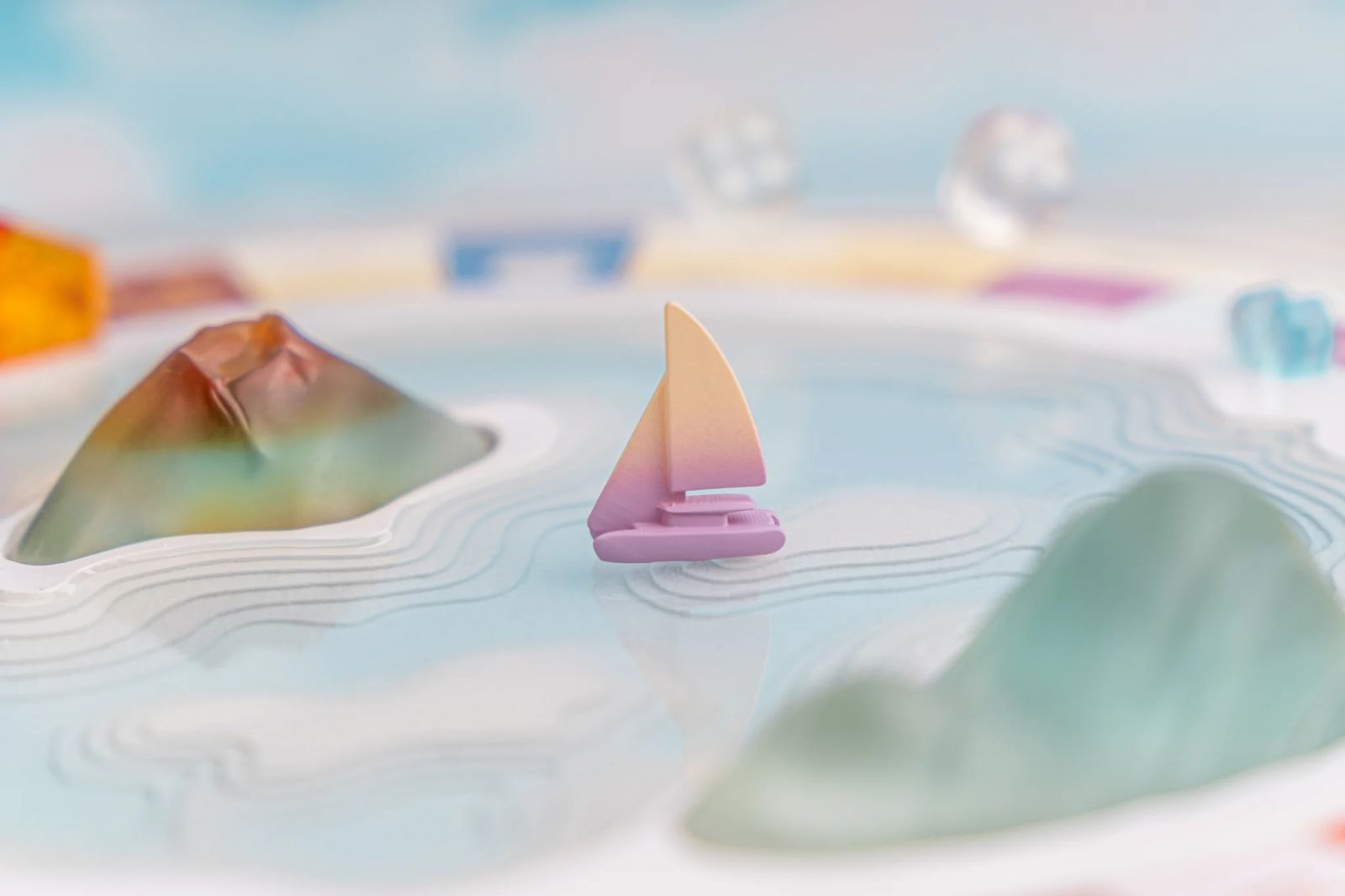
Islandopoly close-up (photo provided by Maztermind)
Islandopoly Review
For most modern gamers, hearing the name Monopoly might evoke a range of different emotions. Some might have fond memories of playing this game with friends and family as a child, others might recall the disappointment of being forced into bankruptcy due to an unlucky roll, and perhaps a few might remember flipping the board out of anger and frustration. It is worth stating upfront that everything you love (or hate) about Monopoly is here in Islandopoly — but the beautiful, relaxing atmosphere of the board and components does help to smooth over any negative emotions that some players might feel for this game.
The components are the real winners here. This is a game that you will want to have on display on a coffee table or other public area as a conversation piece. People will be drawn to it, and once they learn that the gameplay is already familiar to them, they will want to play (assuming they have plenty of time to do so). The aesthetics are very satisfying. I did have a small concern with the boats, which are very lightweight and seem like they may be at risk of breaking in the future. They probably won’t break, but I found myself treating them with extra care, just in case. Also, a few of the island cards don’t match the color scheme of the same islands on the board, so they are a little harder to find (this only slightly impacts the gameplay).
The Islandopoly rulebook contains some interesting facts about all of the real-life locations included on the board, which is a neat feature. However, the rules are not the strong point of the game. They feel more like an addendum to the Monopoly rules than a full rulebook. Let’s be honest: you're going to play the way you play Monopoly. In fact, we found it helpful to have the Monopoly rulebook on hand for clarifications on rules that were vague or missing in Islandopoly, such as mortgages, getting out of Alcatraz, trading or selling properties, and selling hostels and resorts. The rules for auctions are contradicted in the rulebook — in one case, the starting bid is the original price plus $10, while later it is mentioned that the starting bid is just $10 (we prefer the latter). The rulebook is easily changed, however, and could be updated before the full release of the game.
One bright side of learning this game is that it may be a good opportunity to re-read the Monopoly rules and unlearn some of the ubiquitous house rules that make the game drag on forever (gaining extra money if you land directly on the start space, for instance).
In the end, we definitely had fun playing Islandopoly. I am not a regular Monopoly player myself, and it was my kids’ first time playing any version of the game other than Monopoly Gamer (with a Mario Kart theme). To my surprise, they immediately got into it and continued to enjoy playing throughout the game. The play time, of course, can get quite long. We ended up taking a break for the evening and resuming the next day. I ended up getting eliminated after an hour or two of total playtime, but the rest of the family continued having fun through the rest of the game. The kids then requested to play the original game of Monopoly, which we did, using the quick rules variant in the Monopoly rulebook (which still lasted two hours). Afterward, the consensus was that Islandopoly was the best version.
Whether or not you’re a huge Monopoly fan, there is something here to enjoy in this re-theme — an island getaway that, by its unique and pleasing aesthetics, smoothes over some of the potential frustration of the original game. And you don’t have to play the game to appreciate its value as a decorative piece to attract new gamers to your table. This game is certainly a keeper for us — if it also calls to you, check out Islandopoly on Indiegogo.
An Interview with Maztermind
With this company being new to my radar, I reached out with a few questions to learn more about their products, history, and manufacturing process. Nhi Nguyen (Matilda) from Maztermind met with the CEO and responded with some great information.
CGR: What inspired you to start a business creating hand-crafted games?
Maztermind: It took the CEO, Toan Nguyen, nearly three years to thoroughly research this product line and market. He opened and operated a chain of five stores called The Craft House in different cities in Vietnam with the desire to provide Vietnamese handicraft souvenirs for tourists to bring back home, which embraced the imprint and identity of Vietnam.
“I talk to customers and acknowledge that everyone at least has played board games once in their life, but they have not intended to play again for a long time, because the toys are not attractive enough. On the other hand, the market has a very high demand for gifts and home decorations. So why not combine board games, gifts, and home decor together? A gift or a home decoration created from a board game is unique, beautiful, and culture altogether.” — Toan Nguyen
CGR: As a Vietnamese company, what challenges have you had reaching international markets, such as the United States?
Maztermind: We’re absolutely confident in each and every Maztermind product, which includes the R&D process, artist’s collaboration, craftsmanship, product quality, and the story behind it. However, treating the US as a completely unfamiliar market, our most challenging problem is to approach such a fastidious US audience with a high-level taste in handcrafted products in general, and handcrafted board games in specific. Acknowledging that our target audience is quite a niche when it comes to the combination of board games, gifts, and home decor, we hope with the upcoming project penetrating the States, Maztermind can step-by-step build a close community with customers, improve from their feedback, and possibly, create many more products that are accepted and loved by US audiences.
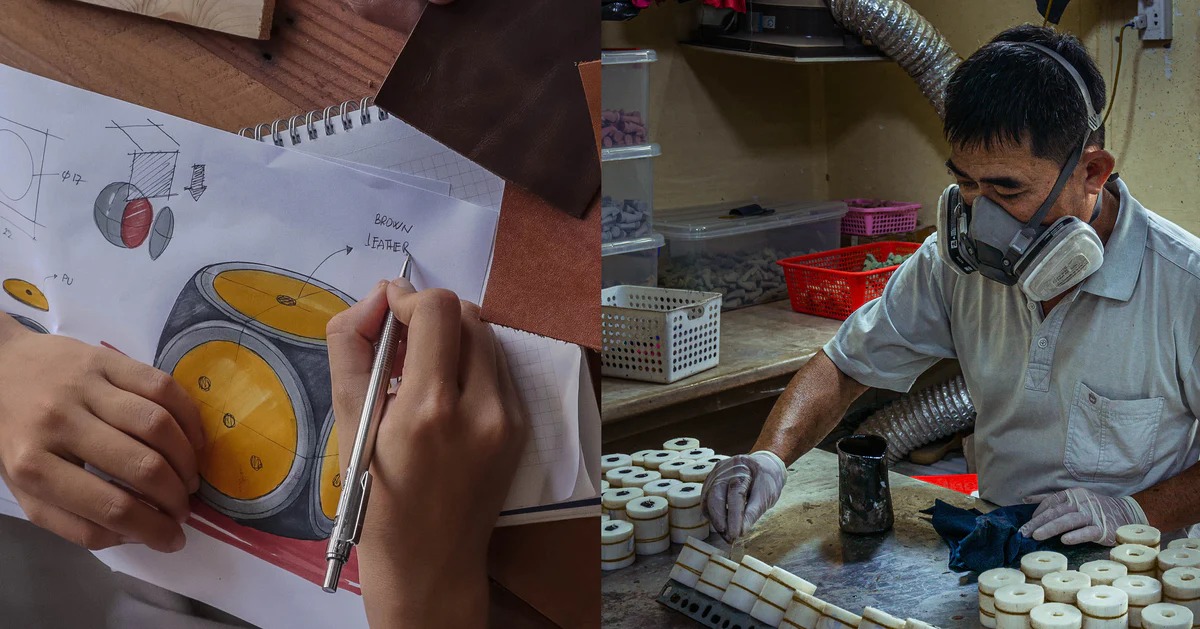
Design and manufacture of Maztermind games (photo provided by Maztermind)
CGR: Could you describe your process for designing and manufacturing a new product?
To bring a product from sketch to reality, Maztermind’s team, including Art Director, Product Designer, Illustrator, Graphic Designer, R&D team, and, last but not least, Project Manager, always prioritizes creativity and inclusivity in each and every product. We encourage the artists to put their drawing/illustration/design style into the product and make it their own. The story behind many of Maztermind’s products is usually about Viet’s culture, lifestyle, and people. Based on the artists’ personal touch, Maztermind hopes to inspire players to collect memories that last longer, feel deeper, and touch further.
Research:
- Research the market, identify the problem with existing products, and the reason we need a new design for this product.
- Decide a price and design style.
- Provide solutions to each problem based on the team's strengths, shaping expectations for the final product.
Brief: Synthesize information from the research step, and give a timeline for each item and specific tasks of each person in the team.
Design: Deploy ideas by sketching, coloring, structuring the product, and building the first mock-up.
Prototype: From drawings on the computer, the design team will work closely with the R&D team to get the complete and closest prototype to the original expectation. This step will usually be repeated many times until the most satisfactory product is obtained, fully meeting the requirements of the brand. All the stages of the production are proudly crafted in Vietnam, and every single step is done meticulously by the skilled hands of more than 70 artisans working at the factory, with 80% of the process being handcrafted, and the other 20% being machine-based.
Bringing products to market: Create content and images to make the product appear "pure" in the eyes of users.
Get feedback and improve: Like a loop, the product will continuously receive feedback from users, then the design and R&D team will receive feedback to adjust the product better.
CGR: Is Islandopoly your first Monopoly variant? What games do you plan on designing in the future?
We did some variants on Monopoly before, to be more specific, Saigonopoly and Hanoiopoly, which stand for the two most significant cities in Vietnam: Sai Gon and Ha Noi. Islandopoly appears to be our first custom game design that goes global, the most time-consuming and fully-invested project so far.
We’ve already had a detailed production plan for upcoming games until 2025. All of the games will continue to maintain our brand’s spirit, which defines Maztermind as a team of artists, makers, and craftsmen who share a passion for recreating familiar traditional board games. Through each and every product we collaborate with different artists to bring out the contemporary side of traditional factors (Two-in-one), the modern side of familiar games (Lumina collection), and the apprehensibility side of complex history through storytelling (Trojan Horse Race). We not only embrace the inspiration behind the art but, also the diversity of art-makers.
Disclosure: we received a complimentary copy of Islandopoly, Premium Classic Chess, and Leather Dice Shaker Cup Set for this article.




